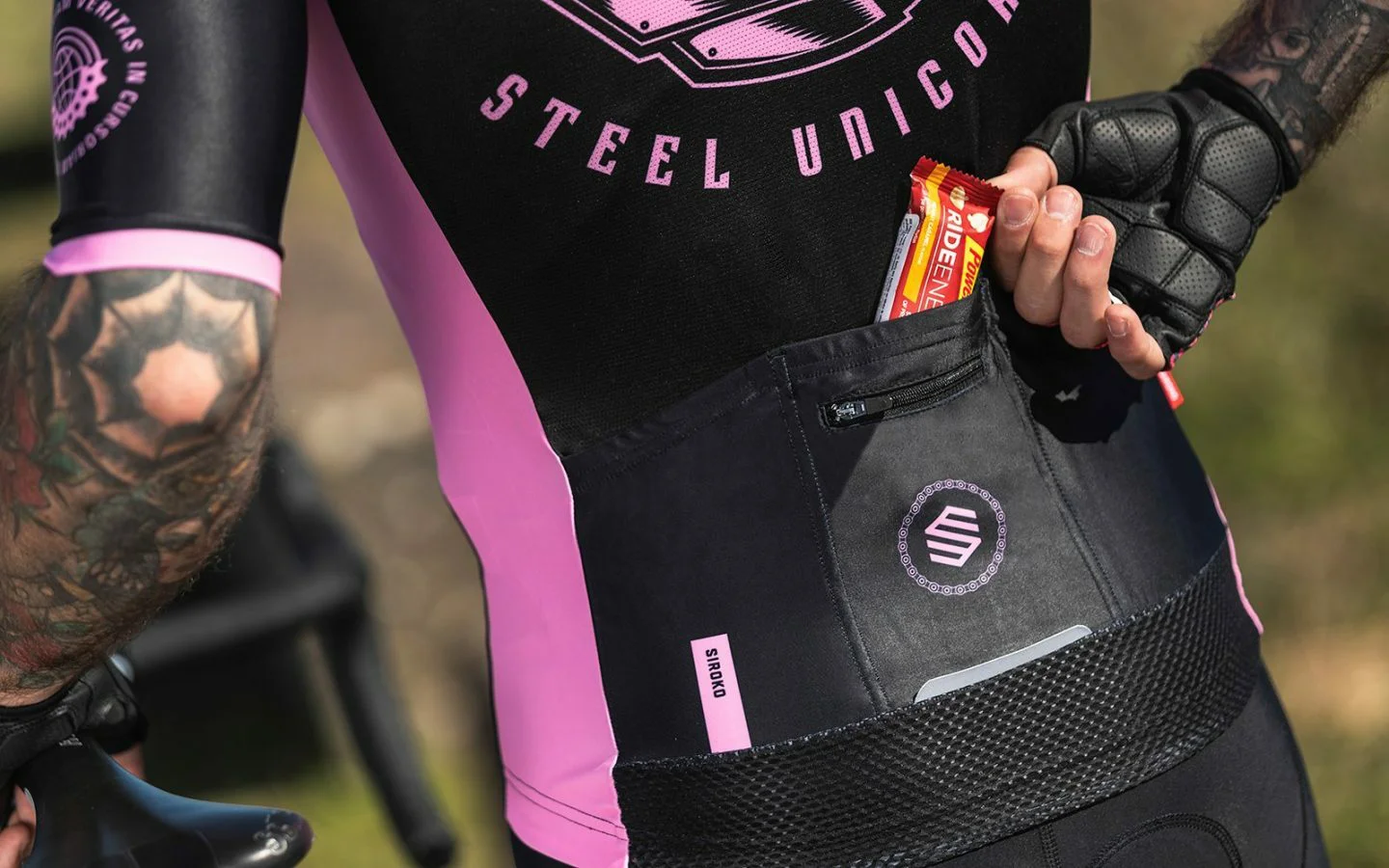Some of the biggest concerns for cyclists, whether they are beginners or not, has to do with nutrition. Knowing what we should eat before, during and after cycling is key to enjoy the ride without suffering more than necessary. In this article we are going to talk about what to eat during the ride and shed some light on nutrition while cycling so that our performance is not compromised by an incorrect diet.
We have divided the article into two parts:
- How many calories we should eat based on the duration and intensity of the bike ride.
- Examples of what we can eat during rides with detailed types of food, quantities and calories.
Before we proceed, let’s explain how our body works when we perform a physical activity such as cycling in order to understand what happens when we’re pedaling and how our body reacts to different types of efforts.
When we’re riding a bike, our metabolism is running like a hybrid car, but in this case it is fueled by fat and glycogen.
During hard workouts, at high intensity and approaching or exceeding your anaerobic threshold, you burn more glycogen than fat.
During gentle workouts or going at a moderate pace below your anaerobic threshold, your body uses both glycogen and fat in equal proportions.
Our body always uses fat but the harder the workout, the more glycogen “fuels” our engine as it is the easiest and most efficient way to supply the muscles with energy.
Don’t worry about fat – its storage in our body is almost infinite. You would have to go a long time without eating to run out of it; a person with a normal body fat percentage (BFP) would have around 80,000-100,000 calories stored as fat in their body. Some top athletes have reached extremely low fat percentages (around 5%) and still have more than enough fat stored to complete an Ironman Triathlon.
As for glycogen, there can be around 2,400 calories stored in our skeletal muscles and liver. The amount depends on the size of your body, your fitness level, the previous day’s training session and the food you eat during and after the workout to restore energy reserves.
We have already talked about protein intake and its importance in this article. As far as our efficiency during exercise is concerned, there is no conclusive evidence to suggest that its consumption together with carbohydrates improves our performance compared to the consumption of carbohydrates alone. However, it is certainly important to consume the recommended amounts of protein for proper recovery. You can eat some protein while cycling, especially when it is a long ride and the training load is high.
That being said, let’s get down to the nitty-gritty: how much and how often should we eat while cycling to avoid bonking? The table below shows calorie and carbohydrates intake according to the duration and intensity of the outing or training:
- 1-2 hours: after the first hour. 100-200 calories from carbohydrates. Drink and/or snacks.
- 2-3 hours at a moderate pace. 100-150 calories from carbohydrates per hour. Drink and/or snacks.
- 2-3 hours at an intense pace. 200-250 calories from carbohydrates per hour. Drink and/or snacks.
- 4-5 hours at a moderate pace. 200-250 calories from carbohydrates per hour. Drink and snacks.
- 4-5 hours at an intense pace. 250 calories from carbohydrates per hour. Drink and snacks.
A moderate pace is defined as a pace below the anaerobic threshold (around 10-20%). An intense pace is the one approaching or exceeding the threshold. Remember that the more intense the workout, the more glycogen is used, and therefore more carbohydrates are needed.
If you want to fine-tune your estimates even further to get an accurate calorie intake indication based on your weight, your personal pace or the type of terrain, we recommend using a bike computer with a heart rate monitor or, better yet, a cycling power meter. This way you can analyze your caloric intake more accurately in one of the many popular apps. You can also use one of the various calorie calculators available on-line, but they are not as reliable as an app analyzing your data from a heart rate monitor or a power meter.
You already know roughly how many calories you should consume depending on the training and that the main source during exercise should be carbohydrates. Now, to make it even easier, let’s look at some examples of snacks you can eat while cycling:
- 1 Cycling bidon (500 ml) with 40 g of energy drink powder – 150 calories from carbohydrates
- 1 Energy Gel (60 ml) – 100 calories from carbohydrates
- 1 Banana (120 g) – 110 calories, 100 from carbohydrates
- 5 Dates (50 g) – 141 calories, 132 from carbohydrates
- Dried fruit (25 g) – on average 220 calories, about 24 from carbohydrates
- 1 Rice Cake (50 g) – 145 calories, 56 from carbohydrates
- ½ Peanut Butter and Jelly Sandwich (PB&J) – about 200 calories, 100 from carbohydrates
- 1 Banana Oatmeal Cookie (50 g) – about 97 calories, 72 from carbohydrates
- 1 Dried Fruit Energy Bar (25 g) – 90 calories from carbohydrates
- 1 Energy Bar (40 g) – on average 150 calories, 120 from carbohydrates
These are just a few examples of workout snacks, but the list can go on and on. If you are looking for more options, simply go to your local store and take some time to read the labels to find out how many calories are in a cereal bar, dried fruit (figs, dried apricots), bread or cookies. We have already shown you three homemade recipes on our blog: an energy drink, gel and bar that will help you restore your energy reserves.




